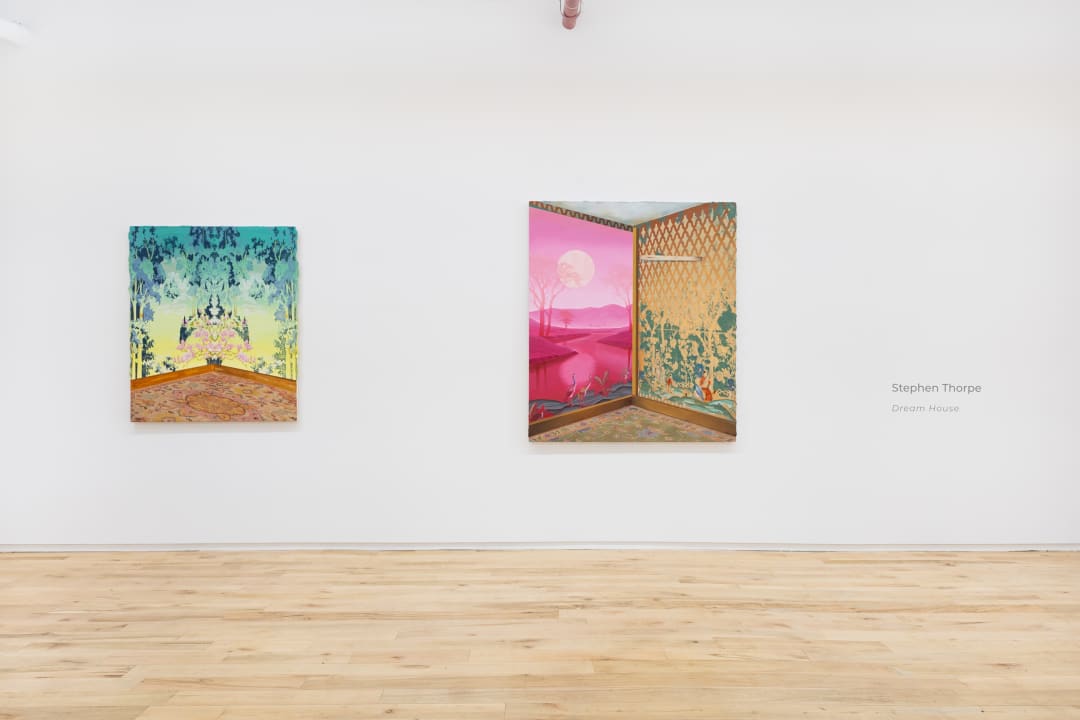
Small and hidden is the door that leads inward, and the entrance is barred by countless
prejudices, mistaken assumptions, and fears. – Carl Jung
DIMIN is pleased to present Dream House, an exhibition of new paintings by New York-based,
British painter Stephen Thorpe. In Dream House, Thorpe continues his exploration of the psyche,
where his painted rooms are likened to varying levels of psychological interiority. Drawing on
psychoanalysis, sociology and symbolism, Thorpe’s ornate interior scenes are at once
representational and abstract, physically and emotionally compartmentalized, representing the
interplay between psychological interiority and exteriority, the conscious and unconscious.
The nine new paintings showcased at DIMIN center on psychoanalyst Carl Jung’s concept of the
“dream house.” In his autobiography, Memories, Dreams and Reflections, Jung records his
seminal dream in which each level and room of a house corresponds to a different level of his own
mind, human history and the collective unconscious. For Jung, the home offers both a map of
one’s own inner psyche and of humanity’s collective evolution, with different layers of the house
representing various states of consciousness.
Thorpe distills this idea down to the corner of a room, as an intimate place of self-reflection with
its own psychology. This theme is further explored through imagery drawn from mythology,
ancient symbols and cultural archetypes. For instance, in Inward Journey into the Luminous
Darkness of the Unconscious (2024), a time-worn European armoire and Orientalist rug sit in stark contrast to a vibrant and dreamlike surrealist landscape in a depiction of what Jung referred to as “synchronicity”, wherein the objective (the physical reality of the scene and our lived
experience) come together with the narrative (the story the painting is depicting – and the stories
we tell ourselves). Solar Light Leads to Anxiety, Danger, Loneliness and Redemption (2024)
similarly portrays a landscape scene juxtaposed with a decaying wall overlaid with 19th and 20th
Century European and Asian motifs, embodying the distortion of memory and the cultural
pollination between East and West. The landscape, meanwhile – depicted clearly as an artwork
on a wall – references the moonlit call to action of the archetypal hero’s journey.